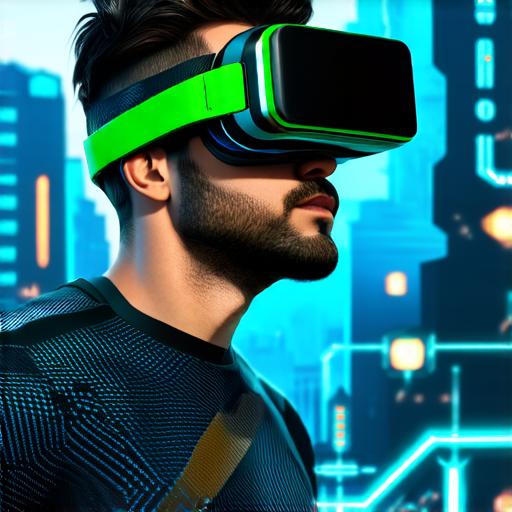
When will virtual reality become accessible?
Virtual reality (VR) is already changing the way we experience the world, from gaming to training and beyond. But when will it become accessible to everyone? In this article, we’ll explore the current state of VR technology, the potential for future advancements, and what you can do right now to get started with virtual reality.
The Current State of Virtual Reality
Virtual reality is a rapidly evolving technology that has already made significant strides in recent years. From the first bulky headsets to more advanced systems like the Oculus Rift and HTC Vive, VR hardware has come a long way. However, there are still many challenges to overcome before VR becomes truly accessible to everyone.
One of the main barriers to widespread adoption of VR is cost. High-end VR headsets can cost thousands of dollars, making them out of reach for most people. While some lower-end options exist, they often have limited features and are not as immersive as higher-end systems.
Another challenge is the lack of content. While there are already plenty of games and other applications available for VR, there is still a long way to go before we see truly diverse and meaningful experiences. This is particularly true in areas like education and training, where VR has the potential to revolutionize the way we learn and work.
The Future of Virtual Reality
Despite these challenges, the future of virtual reality looks bright. As technology continues to advance, costs are likely to come down, making VR more accessible to everyone. We’re already starting to see some promising developments in this area, with companies like Google and Facebook investing heavily in VR research and development.
In addition to cost and content, another major challenge facing VR is the user experience. While many people are excited about the potential of virtual reality, others are skeptical or simply don’t understand how it works. As the technology becomes more mainstream, it will be important to make it as intuitive and easy to use as possible.
One area where we’re already seeing significant progress is in wireless VR headsets. These devices eliminate the need for cables and other physical connections, making them much more convenient to use. We’re also starting to see advancements in haptic technology, which allows us to feel more immersed in virtual environments.
Case Studies and Personal Experiences
One of the best ways to understand the potential of virtual reality is to look at real-world examples. In this section, we’ll explore a few case studies and personal experiences that illustrate how VR is being used today.
Virtual Reality in Education
One area where VR has the potential to make a significant impact is in education. By creating immersive virtual environments, teachers can help students learn in ways that are simply not possible with traditional classroom methods. For example, medical students can practice surgeries in a safe and controlled environment, while history students can explore ancient ruins and other historical sites in 3D.
Virtual Reality in Training
Another area where VR is being used today is in training and simulation. From military simulations to flight training and beyond, VR offers a way to practice real-world scenarios in a safe and controlled environment. This can be particularly useful in industries where mistakes can have serious consequences.
Virtual Reality in Gaming
Of course, virtual reality is perhaps most well-known for its use in gaming. From first-person shooters to sports simulations and beyond, VR offers a level of immersion that simply cannot be achieved with traditional gaming methods. As the technology continues to advance, we’re likely to see even more exciting games and experiences emerge.

Summary
While virtual reality is still in its early stages, it has the potential to revolutionize the way we experience the world. From education and training to gaming and beyond, VR offers a level of immersion that simply cannot be achieved with traditional methods. While there are still many challenges to overcome, the future of virtual reality looks bright, and we’re likely to see even more exciting developments in the years to come.


